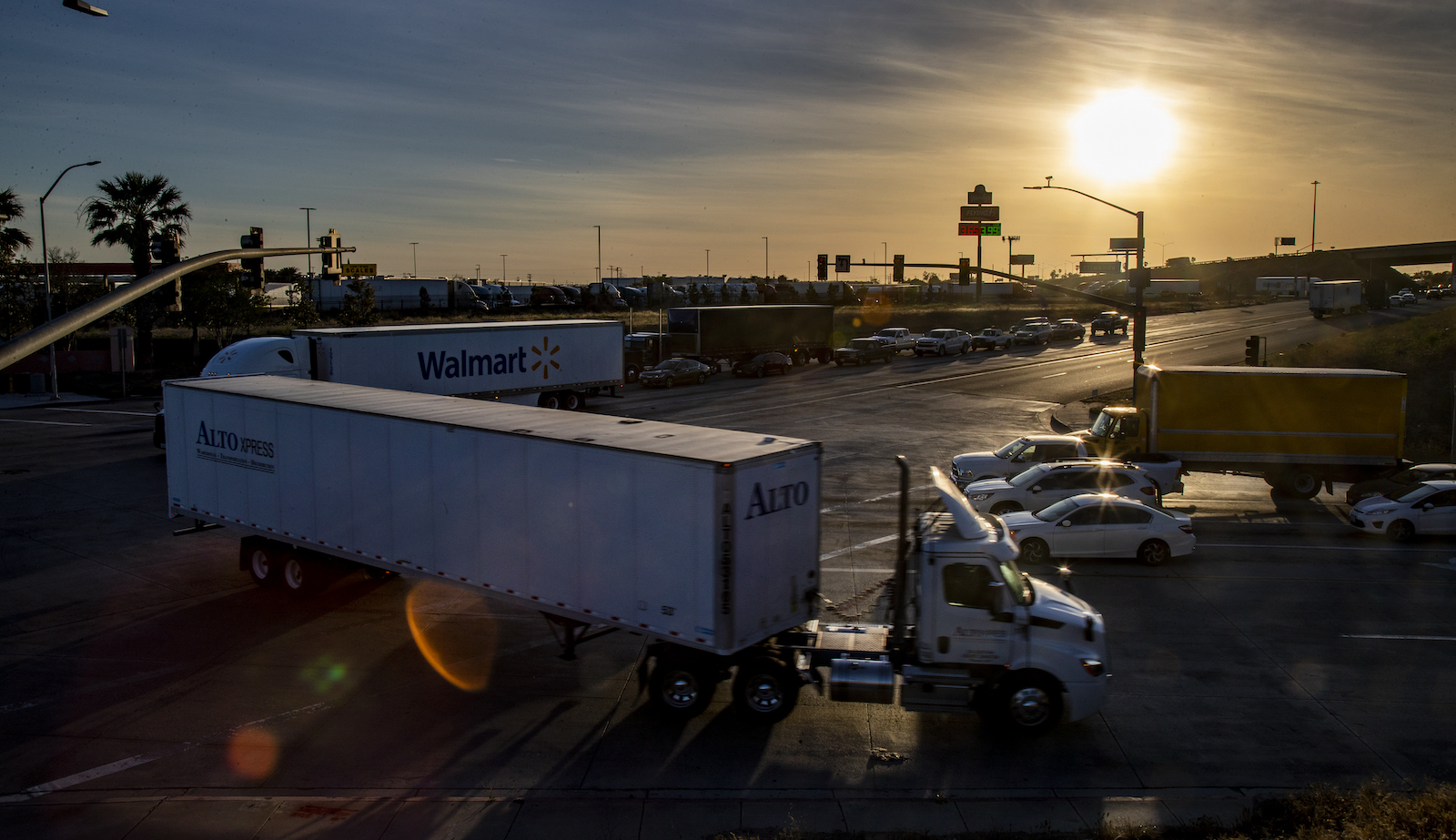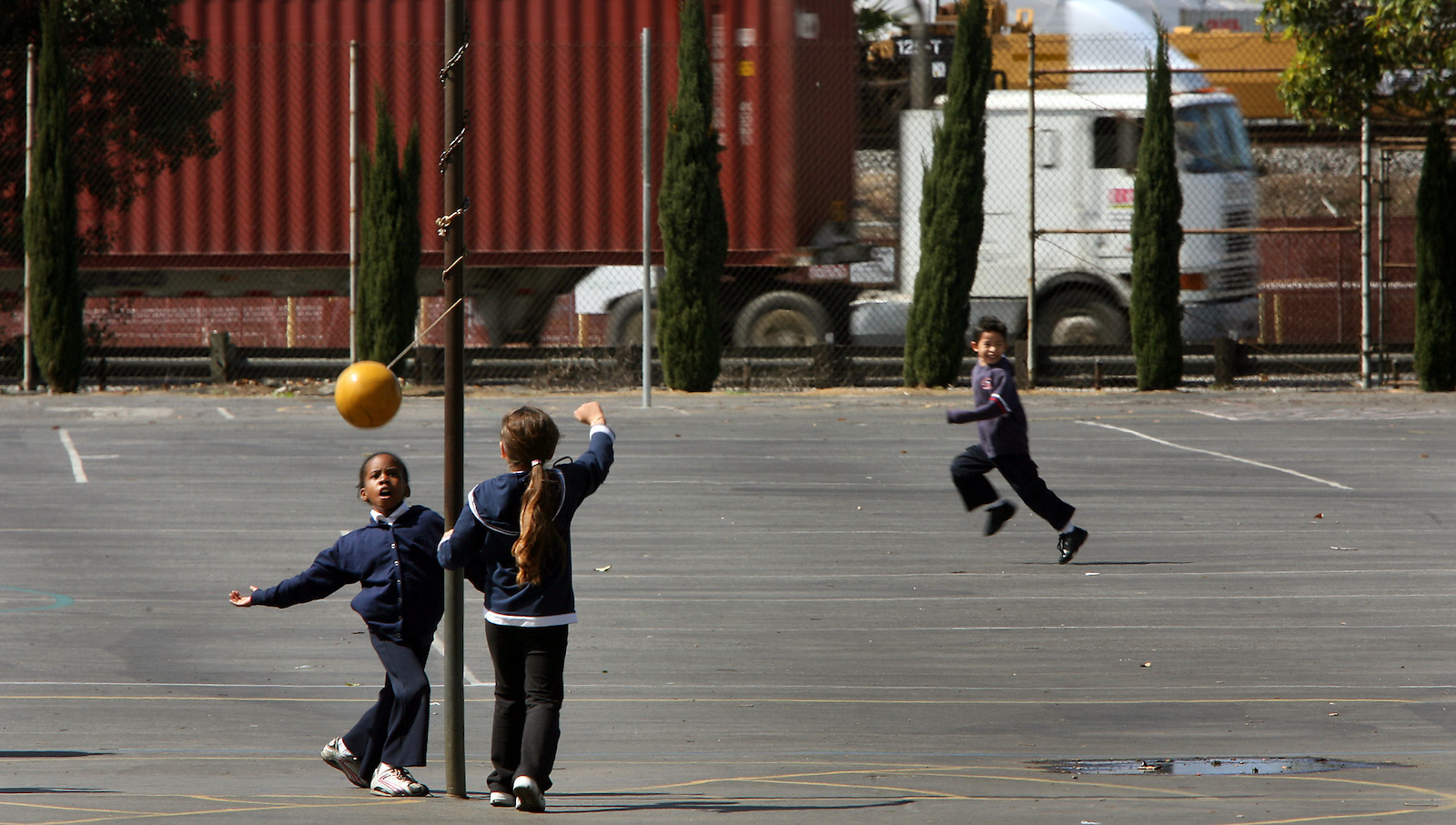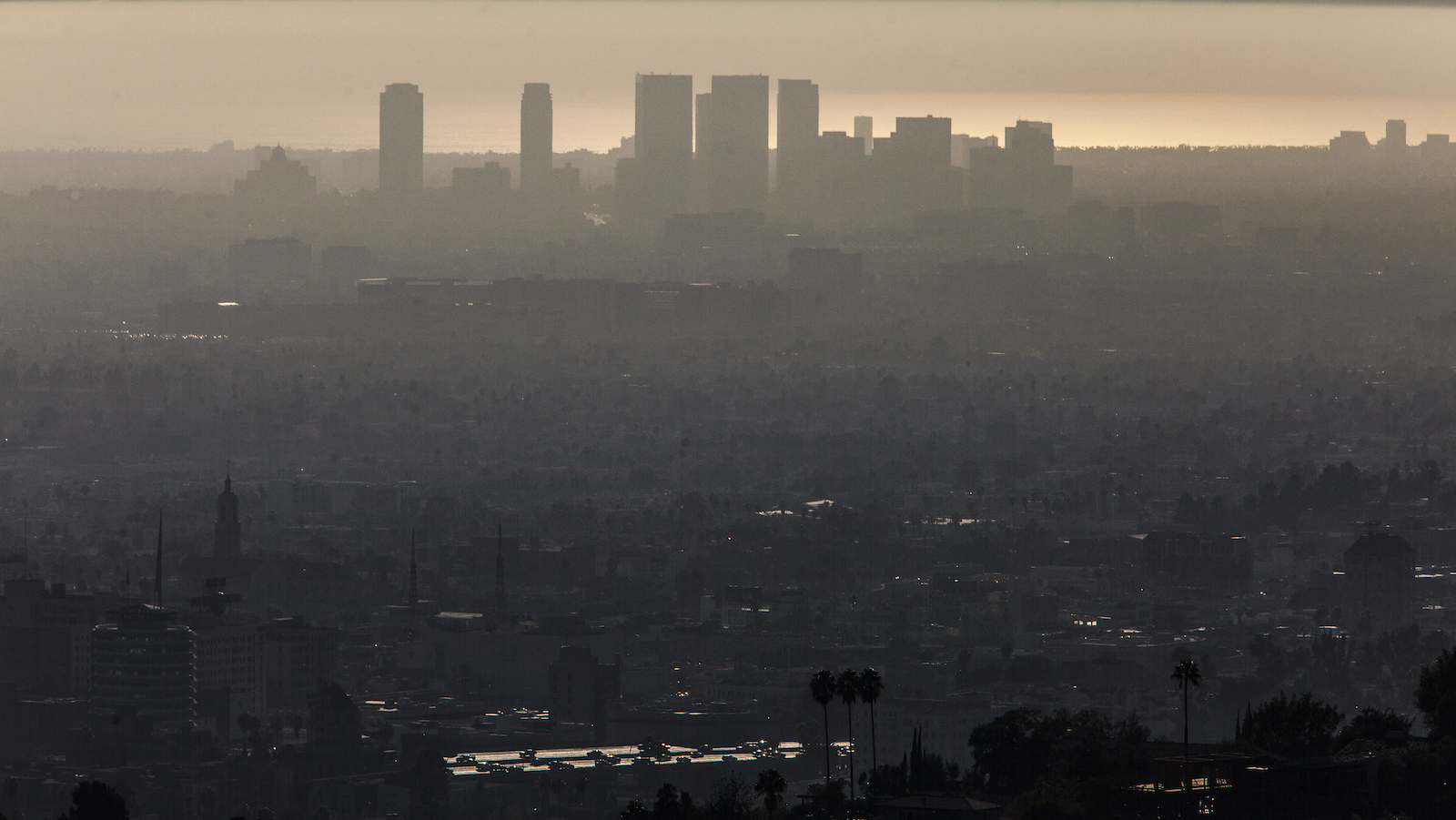Jorge Osvaldo Heredia lives in the San Bernardino foothills in a valley at the foot of the San Bernardino Mountains, a stunning backdrop on most days. But come summer, the air pollution in San Bernardino gets so thick, like a “hot blanket of smog” that it obscures the view of the mountains from Heredia’s working-class, predominantly Latino neighborhood near the San Bernardino International Airport.
“It’s unlivable,” Heredia, 30, told Grist. “The people accommodate [the smog] to survive here, but it’s an area where, really, you can’t walk outside and enjoy the air; you can’t enjoy the outdoors here because the pollution, the air quality has really made it an unlivable space.”
A 15-year-resident of San Bernardino, Heredia volunteers his time to create more green spaces in his neighborhood, and over the past several years has joined his community’s battle to address the environmental impacts of the sprawling warehouse industry in the region, which has brought congestion and traffic from heavy duty trucks, construction, airport flights and freight trains.
The combination of the oppressive heat and record bad air pollution days in the summertime has changed the very way Heredia lives his life, planning his schedule around traffic congestion and avoiding walks on the streets because the traffic is too dangerous. Some neighborhoods lack sidewalks, and it concerns Heredia to see residents walking on roads next to big rigs and heavy duty trucks.
The environmental impacts of the warehouse and logistics industry in the Inland Empire region have made it clear to Heredia and other residents that any solution to address this pollution must involve zero emissions, including all electric truck fleets that would provide residents with relief from the pollution that’s enveloped their lives, as well as solutions that acknowledge of the worsening impacts of climate change in the area.

In California, environmental justice advocates have long called on local government agencies to more aggressively address climate inequities such as air pollution across the state. The release last week of the report by the United Nations’ Intergovernmental Panel on Climate Change offered more evidence to buttress their argument that climate change isn’t just a planetary problem, but a local one too.
Among its findings, the IPCC — the United Nation entity charged with assessing the science related to climate change — cited a growing body of research about the impacts of human-induced climate change and its role in intensifying weather extremes such as heat waves. The report detailed how greenhouse gas emissions are affecting increasingly hotter temperatures, how this warmer climate is expected to increase surface ozone over polluted regions, and how some aspects, such as heat, may be amplified in cities because urban areas are typically warmer than surrounding regions.
Climate researchers described the report as a call to action for governments given the mounting and unequivocal scientific evidence. Yet, at the local level, that call to action has been unheeded for years, despite pressure from advocates who have called for the state and local air quality boards to comprehensively and holistically examine how climate change, via pollution and heat impacts, is influencing public health, says environmental planning and policy expert Michael Méndez, an assistant professor at the School of Social Ecology at the University of California, Irvine.
The issue, he says, is that for the most part, policy makers and legislators have bifurcated the process for addressing global and local pollution, creating policy silos that examine smog and other types of local pollution as an issue separate from climate change. Climate change is seen as the fundamental role of state agencies, while local pollution is the purview of local air districts, he explained.
One example that Méndez pointed to is California’s 2016 reauthorization of its Global Warming Solutions Act, which called for a sharp reduction in greenhouse gas emissions. The reauthorization stripped local air quality agencies, such as the Bay Area Air Quality Management District, which wanted to regulate greenhouse gas emissions from local area refineries, of the ability to directly address these emissions.
Mandating local agencies to focus exclusively on local pollution inhibits the agencies from approaching pollution from a broader perspective and denies them the tools to address pollution that’s impacted by climate, said Méndez, the author of the book Climate Change from the Streets: How Conflict and Collaboration Strengthen the Environmental Justice Movement.
In California, while some of the most severely polluted regions in the state have improved air quality, the state is still failing to meet state and federal air quality standards. One of the reasons why, according to Adrian Martinez, a senior attorney with the environmental law organization Earthjustice, is that local air quality boards, such as the South Coast Air Quality Management District in Southern California, are failing to account for climate change impacts, such as global warming, when creating pollution models and setting emissions reductions goals.
Martinez likened this to setting the wrong course from the outset because heat is one of the ingredients, along with nitrogen oxides (a byproduct of combustion) and volatile organic compounds, that creates surface ozone. It’s why ozone levels tend to be higher during summer months. As climate change has increased temperatures and changed weather patterns, this has meant an increase in dirty air days earlier in the year and extending later in the year as well, said Martinez.
Failing to factor in rising temperatures and heat waves into pollution modeling means that the SCAQMD pollution estimates will be inaccurate, making it difficult to determine the appropriate amount of pollution to reduce, he said.
“Their failure to look at the impacts of climate change in all of their planning has meant that they’re not really hitting the mark,” said Martinez. “The consequences are that people are breathing dirty air, and the law allows it.”

While some might consider climate change as a distant threat, frontline communities throughout Southern California such as San Bernardino, which are severely impacted by extreme heat and pollution levels, have been paying the price of policy inaction via health impacts such as asthma and other harms, said Martinez. Last year, Los Angeles experienced the worst ozone season in nearly three decades, pushing the Los Angeles-Long Beach region to the No. 1 spot in the nation for high ozone days, followed by Bakersfield, and Visalia, Ca.
The American Lung Association’s “State of the Air” 2021 report reflects the impacts of climate change on air quality nationally. The report shows that despite some progress in cleaning up air pollution, more than 40 percent of Americans (about 135 million people) are living in areas with unhealthy levels of ozone or particle pollution, and that people of color are more than three times more likely than white people to breathe the most polluted air.
While climate change and local pollution is still an emerging policy area, Méndez said there are already agencies that have taken the lead in incorporating climate change factors into their analyses and modeling and can serve as examples for agencies such as air quality districts. For example, California’s regional water boards are starting to revise regulations and are modeling climate change impacts in light of increasingly hotter temperatures, he said. Local air quality boards should be doing similar work via climate change modeling around air pollution, but this will require political leadership, mandates and funding, noted Méndez.
For residents like Heredia, the report’s findings represent an opportunity for local government agencies to take into consideration how rising temperatures affect the local environment before charging forward and approving additional industries that contribute pollution in a region already burdened by smog.
“I think it’s good to sound the alarm on these extreme weather patterns so at least there’s a call to action on a world wide level,” said Heredia. “But definitely it’s difficult, at least at the local level when your elected officials — they’re not getting it. They might feel that they don’t have any power against climate change, but I don’t think that’s true. I think everybody has the power to do something and it does start at the local level.”



